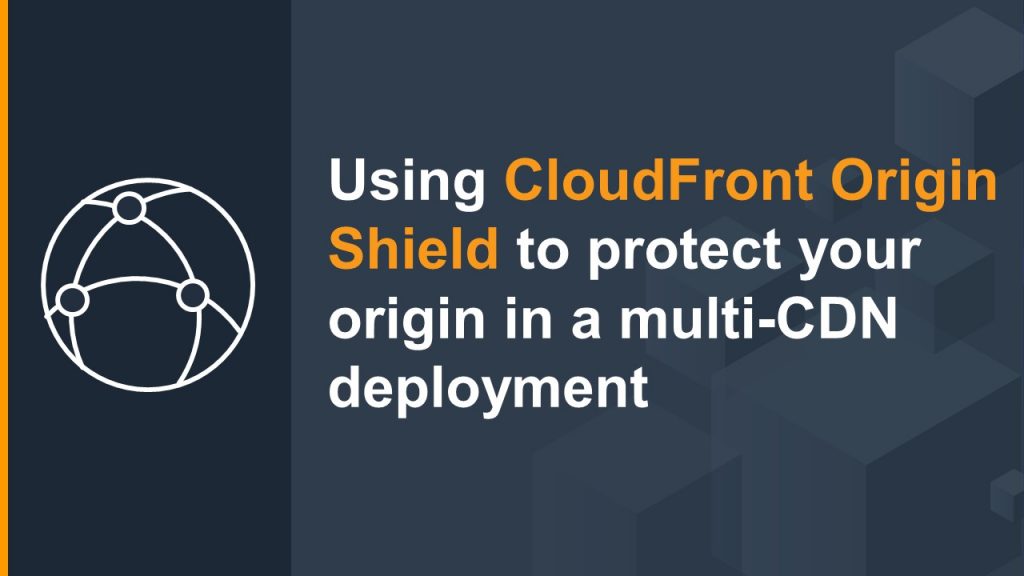Networking & Content Delivery
Tag: CloudFront
Improve Single-Page Application (SPA) Performance with a Same Domain policy using Amazon CloudFront
In this post, we demonstrate how you can use a same domain policy with Amazon CloudFront. Using this method, you eliminate the need for enabling Cross-Origin Resource Sharing (CORS), which results in improved performance for Single-Page Applications (SPA). Over the years, SPA frameworks such as ReactJs and AngularJs have become a popular method for developing […]
Cost-Optimizing your AWS architectures by utilizing Amazon CloudFront features
Amazon CloudFront is a global content delivery network (CDN) that makes it easy to deliver websites, videos, apps, and APIs securely and at high speeds with low latency. You can use CloudFront to reduce latency by delivering data through 400+ globally dispersed Points of Presence (PoPs) and improve security with traffic encryption, access controls, and […]
CloudFront Functions – A New Security Paradigm for CDN Edge Computing
CloudFront Functions is a new serverless scripting capability that allows you to run JavaScript code at more than 225 Amazon CloudFront edge locations to perform lightweight HTTP transformations and customize content delivery. This blog details our security journey and the controls we put in place to make CloudFront Functions raise the security bar when it comes to edge computing capabilities.
Using CloudFront Origin Shield to protect your origin in a multi-CDN deployment
This blog details how Amazon CloudFront’s recently announced Origin Shield can enhance your multi-CDN media workload by minimizing the load on our your origin. This reduction in origin load can improve your origin’s availability, reduce its operating costs, and even improve general performance for your viewers.
Unpacking SNI-based SSL and dedicated IP SSL for Amazon CloudFront
Amazon CloudFront is a content delivery network (CDN) that securely delivers static and dynamic web content with low latency and high transfer speeds using a global network of edge locations. When you request content that is served via CloudFront, you are routed to the nearest edge location in order to minimize network latency and maximize […]
Deliver Your App’s Dynamic Content Using Amazon CloudFront – Getting Started Template
Many websites and web applications serve a combination of static content—HTML, CSS, JPG, or other files that all end viewers can see—and dynamic content, which is personalized for each end viewer. Fortunately, Amazon CloudFront can serve both types of content, to reduce latency, protect your architecture, and optimize costs. In this post, we demonstrate how […]
Leveraging Lambda@Edge for AdTech: Cookie Syncing at the Edge
In online advertising, cookies play a key role in identifying and profiling users. They allow advertisers to display targeted and personalized ads to users as they browse the internet, from a desktop browser or mobile browser. Advertisers can achieve this personalization by assigning a cookie to users when their ads are displayed on websites or […]
Global Data Ingestion with Amazon CloudFront and Lambda@Edge
Special thanks to Raul Frias for contributing to this blog post Lambda@Edge enables you to run AWS Lambda functions globally so that you can process and respond to user requests at low latencies. Running Lambda functions in close geographical proximity to users helps satisfy a number of use cases, such as website personalization, Search Engine […]
Measuring CloudFront Performance
Benchmarking Content Delivery Network (CDN) performance is a common practice to understand what real end users will experience in a production environment. In this blog, we discuss how to evaluate CDN performance with the options available today for Real User Monitoring (RUM) and Synthetic monitoring.
Accelerate & Protect Games with Amazon CloudFront, AWS Shield, & AWS WAF
Your game development process is done and now it’s time to go to market. Read how Amazon CloudFront can accelerate the delivery of your game files and how AWS Shield and AWS WAF can protect your application.









